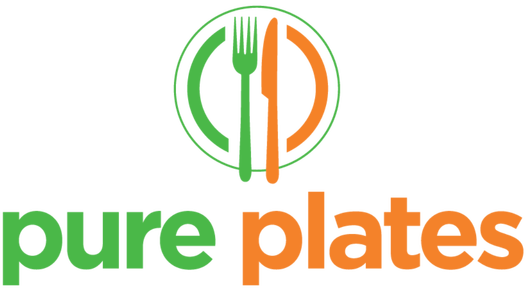How Much Fiber Should You Consume?
Fiber is incredibly important to maintain our health and keep us in good shape, but the truth is that most of us don’t get enough of it! Fiber is a type of complex carbohydrate found mainly in fruits, vegetables, grains, and legumes. While fiber is mainly known for its ability to relieve constipation, it certainly has many other benefits as well! From maintaining a healthy weight, to preventing chronic disease, like cardiovascular disease, type 2 diabetes, and even cancer, including more fiber in your diet certainly has its benefits..
Keep on reading if you want to find out what exactly fiber is, the amount of fiber you need daily to maintain your health, some sources of fiber-rich foods, and some tips and tricks to boost your fiber intake on a daily basis!

What is fiber?
Dietary fiber comes from the part of the plant that our bodies cannot digest. Instead of being broken down like other carbohydrate molecules, proteins, or fats, it remains intact and passes through the digestive system undigested.
There are two types of fiber that act differently in our body:
Both soluble and insoluble fiber are found in most plant foods, but their amounts can vary. Keep reading if you want to know more about which foods contain the most dietary fiber!
How much fiber do I need?
According to the USDA guidelines for Americans, the adequate intake of fiber for women is 25g/day and 38g/day for men. On average, Americans consume only about 16g of fiber a day! Therefore, it’s important to make sure that you’re getting enough fiber from your meals and snacks. Pure Plates helps you to do so by providing you with fiber-rich options.

Sources of fiber:
Incorporating high-fiber foods into your diet is essential to maintaining a healthy lifestyle. Dietary fiber is largely found in many plant foods, including whole grains, fruits and vegetables, and legumes. Here are some fiber-rich foods to include in your diet:
Lentils: Lentils are rich in both soluble and insoluble fiber. One cup of cooked lentils will provide more than 15g of fiber- this is equivalent to 60% of your daily needs!
Berries: Berries are a great source of fiber, specifically soluble fiber. 1 cup of blackberries contain about 5.3g of dietary fiber.
Artichoke: Artichoke contains a great amount of dietary fiber to keep your digestive system healthy! 1 medium-sized artichoke contains about 7g of fiber.
Oats: Not only are oats a great source of protein, but they’re also plentiful in dietary fiber! One cup of oats will contribute to 8g of dietary fiber. Make sure to check out these delicious Protein Pumpkin Muffins from Pure Plates made with rolled oats containing 6g of dietary fiber per serving to decrease inflammation and improve your bowel movement!
Beans: Beans, such as garbanzo, kidney, lima, or navy beans, are another fiber-rich food that you should consider adding to your diet. Pinto beans in particular are an excellent source of dietary fiber, containing about 30g of fiber per one cup!
Dried fruits: Dried fruits are also fiber-rich and can be easily added to your diet- they make excellent snacks!

Pure Plates offers many fiber-rich foods on their plant-filled menu, including fruit options, vegetables, and homemade bars packed with nuts and seeds.
Tips to incorporate more fiber in your diet
- Start your day with a bowl of oats and add your favorite fruits on top
- Choose whole grains instead of refined
- Add beans or lentils to your salads or soups
- Add fruits, nuts, and seeds to a bowl of greek yogurt
- Try not to peel the skin off certain fruits- that’s where most of the fiber is!
- Eat whole fruits and vegetables rather than juicing them
- Snack on unsalted nuts, seeds, and dried fruits
- Try also snacking on raw vegetables and dipping them in hummus- all fiber-rich foods!
No matter your preference of which fiber-rich food to consume, Pure Plates offers plenty of options to choose from that can help you to see the benefits!

